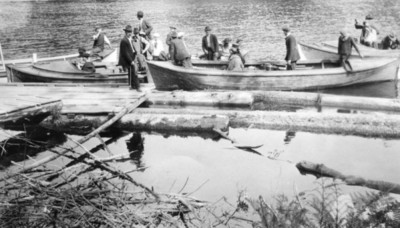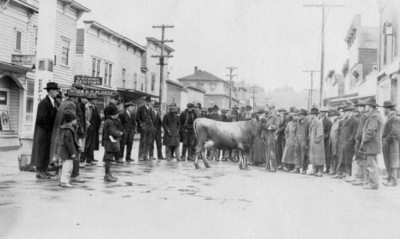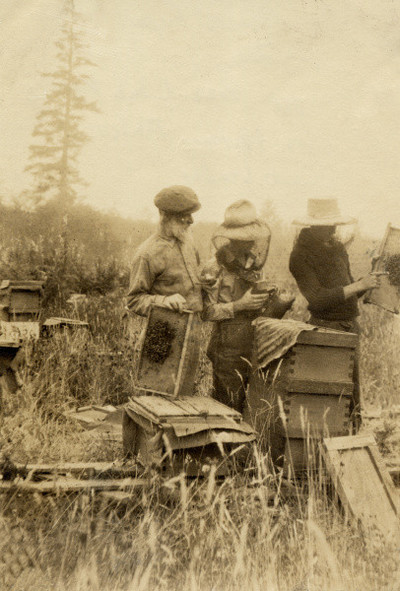A major challenge to early agents was the remote conditions under which they operated. One such agent was J. L. Smith. In November of 1913, Smith began his appointment as a county agent for Coos County along the southern Oregon coast. Because there were no winter roads to connect his office in Coquille with other points in Western Oregon, he traveled to his new station by way of a boat departing from the Columbia River and traveling all the way south along the whole length of the Oregon Coast. Smith traded in the traditional Model-T Ford used by most agents for a boat which he used to navigate the sloughs and rivers which connected the community in the absence of roads.
Once settled into his new post, Smith set to work, making 400 visits to 250 of the area farms and establishing cow testing associations, lime demonstrations, corn and alfalfa trials, and establishing programs to burn and re-seed logged-off land. He also arranged for Bulletin racks to be placed on the principal public passenger boats for convenient distribution of Extension publications to the community’s residents. While Smith’s experiences highlight the extremes which agents would go to in reaching their audience, he was by no means unique. All across the state, agents braved snowy mountain passes, long and lonely stretches of desert scrub, and muddy tidal flats to reach the people of Oregon where they lived and worked.
Following the post WWI boom, the price fell out of the market on agricultural goods. In response to this, Extension shifted its teaching program from what could be grown to what could be sold outside the state. Oregon’s wide ranging environmental conditions might have allowed for a diverse agricultural profile, however, geographically the state was as far removed from population centers in the United States as was physically possible with only limited access to Eastern Markets. Once the needs of Oregon consumers were met, therefore, there was little in the way of cost effective means to sell one’s surplus.
Extension agents expanded their program to include crop specific market analysis and advertising alongside their established line-up of Bulletins on cultivation and pest management. Adjustments in dairying practices to produce higher grade butter and transitioning from apple to winter pear orchards, for example, helped farmers to produce higher-end products that were hardy enough to withstand both transportation and market costs with a profit.




